In Oct, 1996, Jiangtaibao celebrated 70th anniversary of
Long March and built the Red Army's Long March Monument under
the authorization of Ningxia Hui Autonomous Region and the
Political Bureau of the 16th Central Committee of the Communist
Party of China (CPC). In Sep 1, Jiang Zemin-the contemporary
general secretary of the CPC Central Committee, Chairman of
the People's Republic of China and chairman of the state Central
Military Commission, entitled the monument “中国工农红军长征将台堡会师纪念碑”.
The monument is consisted of base, main body and top. It’s
22.8m high. The obverse side is the title, while the back
is epigraph written by Xiji County government. On the top,
there are three head portraits of Red Army, representing the
successful junction of the three front armies, and at the
base, there are eight pieces of relief sculptures. There are
steps on its east. The memorial square is 5000km2.
The epigraph was writen like that: The Long March was a famous
military manoeuvre conducted by the Workers' and Peasants'
Red Army led by the Communist Party of China (CPC) from 1934
to 1936 to combat the then Kuomintang regime. Though many
soldiers died on the way, the Red Army finally arrived at
Yan'an in northern Shaanxi Province after the 12,500-kilometre
trek, where the new CPC headquarters was established.
On October 16th, 1934, the Long March began. 86,000 men and
woman began the trip that would last over a year until October
19, 1935 in Yan'an , Sha'anxi Province. Some of the prominent
Chinese leaders that began the Long March were Mao Zedong,
Zhou Enlai, Deng Xiaoping, Zhu De, Peng Dehuai, leading the
Third Army Group, Lin Biao, leading the First Army Group,
Nie Rongzhen, political commissar of the First Front Army,
Liu Bocheng, Ye Jianying, (the preceding from Zhu to Ye would
later be declared Marshals in 1955), and Li Xiannian, who
would become the President of the People's Republic of China.
He Long, (also to be named a Marshal) had been sent ahead
leading the Second Army Group and to-be-Marshal Chen Yi was
left behind with the wounded and sick.
In October,1936, the cavalry regiment of the 15th Army Corps
of the First Front Army, originally stationed in Tongxin City
of Ningxia, had taken the enemy by surprise and captured Huining
City in southeast Gansu after two nights quick march covering
150km. They wiped out the enemy troops guarding the city and
gloriously prepared the way for the junction with the Fourth
Front Army.
October 9, the Fourth Front Army led by Commander-in-Chief
Zhu De joined forces with troops of the First Front Army led
by the Commander of the First Division, Chen Geng. Zhu De
was accompanied by Zhang Guotao, Xu Xiangqian and Chen Changhao.
Riding on horseback, Zhu De passed through the gateway all
decked out by the First Front Army soldiers to welcome the
Fourth Front Army, and as he entered Huining City, he was
welcomed by the commanders and fighters of the First Front
Army lining the streets, shouting slogans, cheering and applauding.As
soon as the commanding officers entered the building, the
soldiers of the two armies rushed towards each other, warmly
shaking hands and embracing.
October 22, the Second Division of the First Army Corps of
the First Front Army under Commander Yang Dezhi and Commissar
Xiao Hua, successfully captured Jiangtaibao town in Longde
county of Ningxia, about 80km east of Huining, ready to welcome
the Second Front Army led by He Long, its general commanding
officer and Ren Bishi, political commissar. This marked the
triumphant union of the Red Army's three front armies, bringing
the total number of troops of the Red Army to between 30,000
and 40,000.
The grand joining of forces by the three front armies signaled
the victorious conclusion of the 25,000 li (12,500km) Long
March. It meant a tremendous boost to the Red Army forces.
It meant the Red Army had advanced to the forefront of the
resistance against Japanese aggression, of the struggle to
national salvation.
It meant the Chinese Communist Party now had a stronger basis
for getting the Kuomintang nationalist government to change
its policy of continuing the civil war and non-resistance
to Japanese aggression. the Long March, describing it a rarely-seen
expedition in the history of human warfare and referred to
the long time it took, the perilous route it traversed and
the great disparity of force between the Red Army and enemy
troops. The victory of the Long March reflects the outstanding
capabilities of the Chinese Communists in leading the revolutionary
war, the undaunted spirit of the Red Army officers and soldiers
who bravely sacrificed their lives for national independence
and people's emancipation the Long March was a crucial turning
point for the Chinese Revolution which ushered in a new dawn
and opened up a bright future for the Party to unite and lead
the people to defeat Japanese aggressors; and strive for building
a new country.
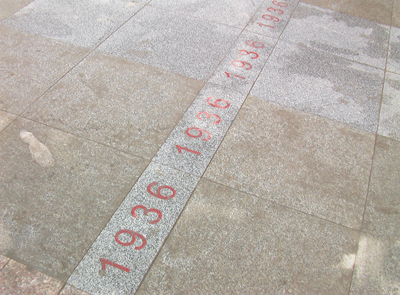 |
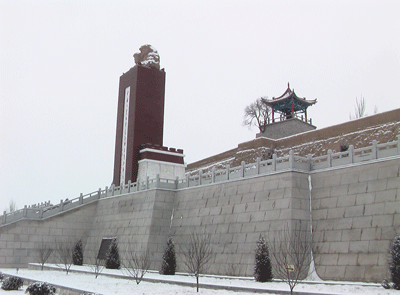 |
Walking on the square, you can see red “1936”on the
ground. It was in 1936, the grand joining of forces by
the three front armies signaled the victorious conclusion
of the 25,000 li(12,500km) Long March.
|
The monument is standing in the most remarkable place
on the square, which forms bright scenery. |
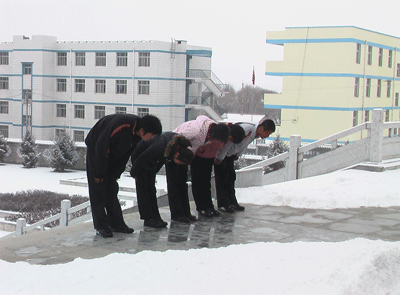 |
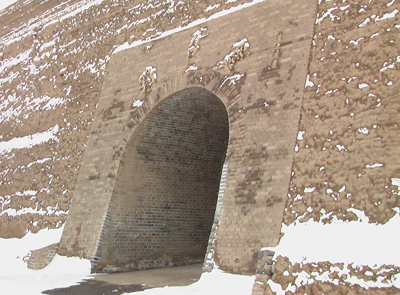 |
| We all made a low bow to the Red Army soldiers. |
Then, we came to Jiangtaibao |
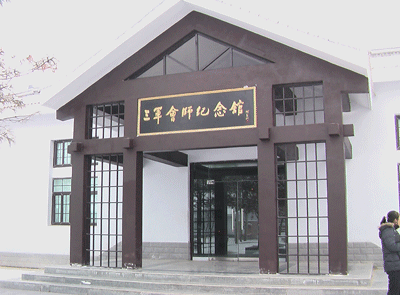 |
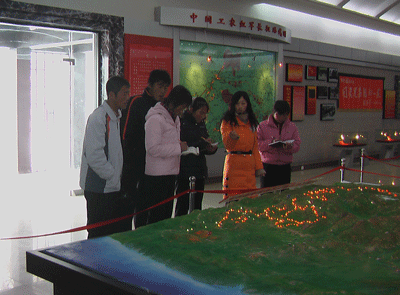 |
| Red Army's museum, where used to be Jiangtaibao Town
Government. |
The staff-Miss Ma explained each exhibit seriously. |
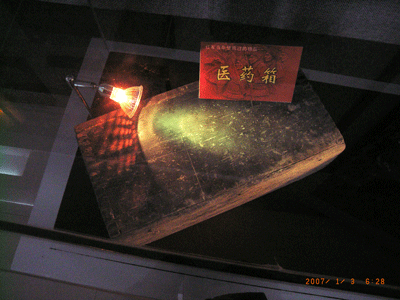 |
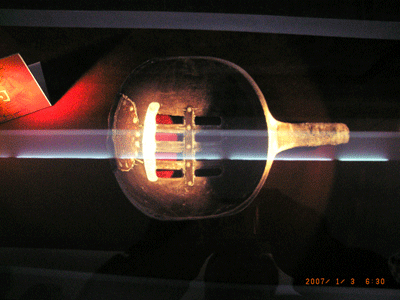 |
| This is medicine box used by Red Army in Long March.
|
This is the spoon used to make potato noodles. |
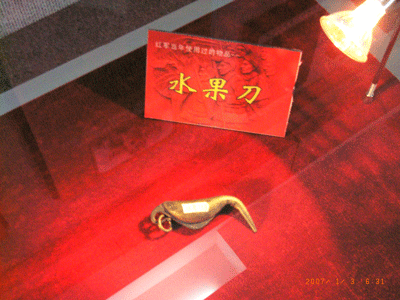 |
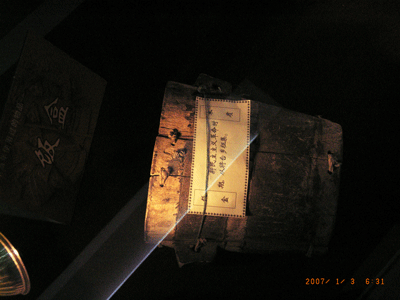 |
| This is fruit knife. |
This is wooden-made lunch box. |
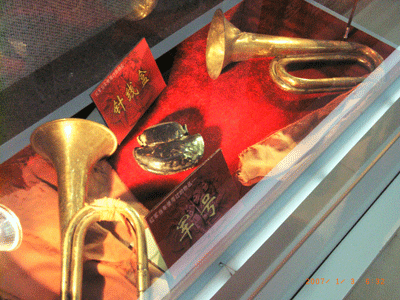 |
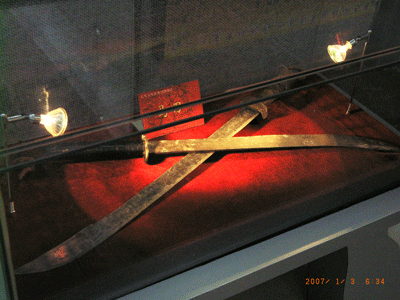 |
| This is thread box. |
This is saber used to kill enemies. |
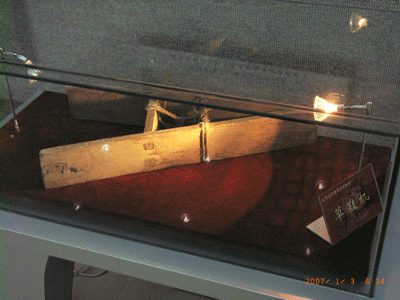 |
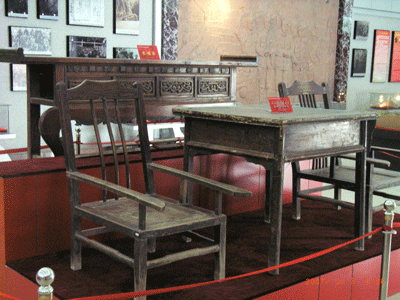 |
| The Red Army's shoes were made of grasses on a special
machine. We don't figure out how they made it at that
time. |
The table at the back is the one Hui people used to
invite Chairman Mao for dinner. |
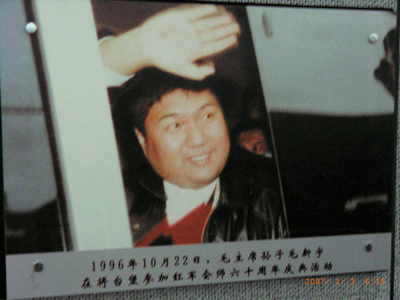 |
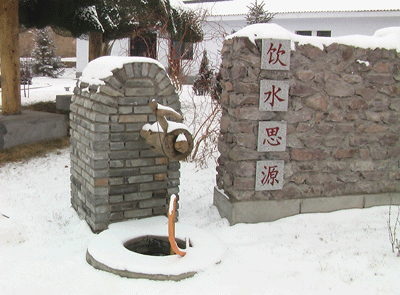 |
| On Oct 22, 1996, Chairman Mao's grandson-Mao Xin-yu
participated in 60th anniversary of Long March. |
Local peopel never forget where their happiness comes
from. |
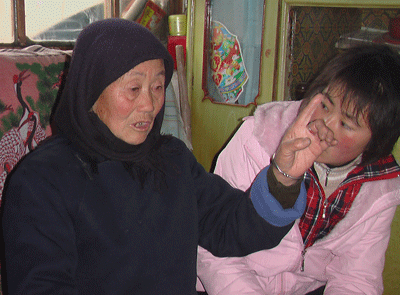 |
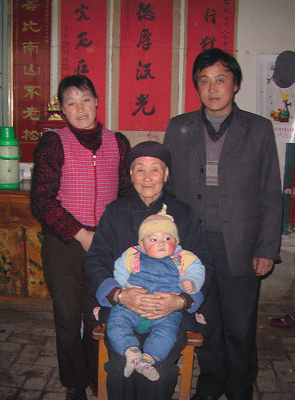 |
| At last, we called at Mrs. Chen Yu-lou's home, where
she told us the story about his father and the Red Army.
|
This is the picture of her grandson, granddaughter-in-law,
grand grandson and her. |
|
